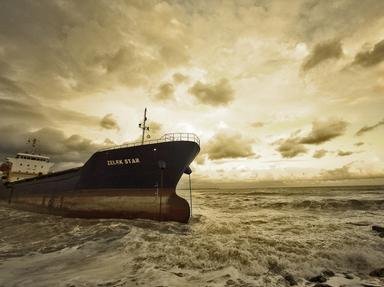Quiz Answer Key and Fun Facts
1. Barely more than two years after the 'Titanic' sank, a tragedy of almost equally huge scale occurred when another passenger ship on the North Atlantic route sank with the loss of more than 1,000 lives. What was her name?
2. What disaster befell the cruiseship 'Morro Castle' off the coast of the USA in 1934?
3. Disasters at sea: How long did it take the 'Herald Of Free Enterprise' to capsize and sink?
4. Not all shipping disasters have taken place on the open seas. The pleasure cruiser 'Marchioness' sank in the River Thames in August 1989 after being struck by what other type of vessel?
5. In July 1956, the Italian liner 'Andrea Doria' was struck and sunk by a ship bearing the name of a European capital city. What was it?
6. Maritime disasters: What magnificent treasures were rumoured to be on board the East Indiaman 'Grosevenor' when she was wrecked on the coast of South Africa in 1782?
7. Many sailors died as a result of the mutiny on the Russian ship 'Potemkin', and the mutiny has been blamed for the deaths of up to 2,000 people on shore. Why did the sailors mutiny in the first place?
8. Early in WWI, the British Admiralty planned a new class of submarines to counter the challenge of the German U boats.They were meant to be big, powerful and fast, but proved to be a disaster. What was the name of this class?
9. When 'HMS Erebus' and 'HMS Terror' were dispatched in 1847 to try to find the fabled Northwest Passage - and then disappeared - Sir John Franklin was in charge. He had what might be perceived as a handicap for a polar explorer; what was it?
10. Not all mishaps at sea have had a tragic outcome, as the case of Maurice and Maralyn Bailey proves. After their yacht sank, they managed to survive in a small rubber raft for how many days?
Source: Author
darksplash
This quiz was reviewed by FunTrivia editor
trident before going online.
Any errors found in FunTrivia content are routinely corrected through our feedback system.

